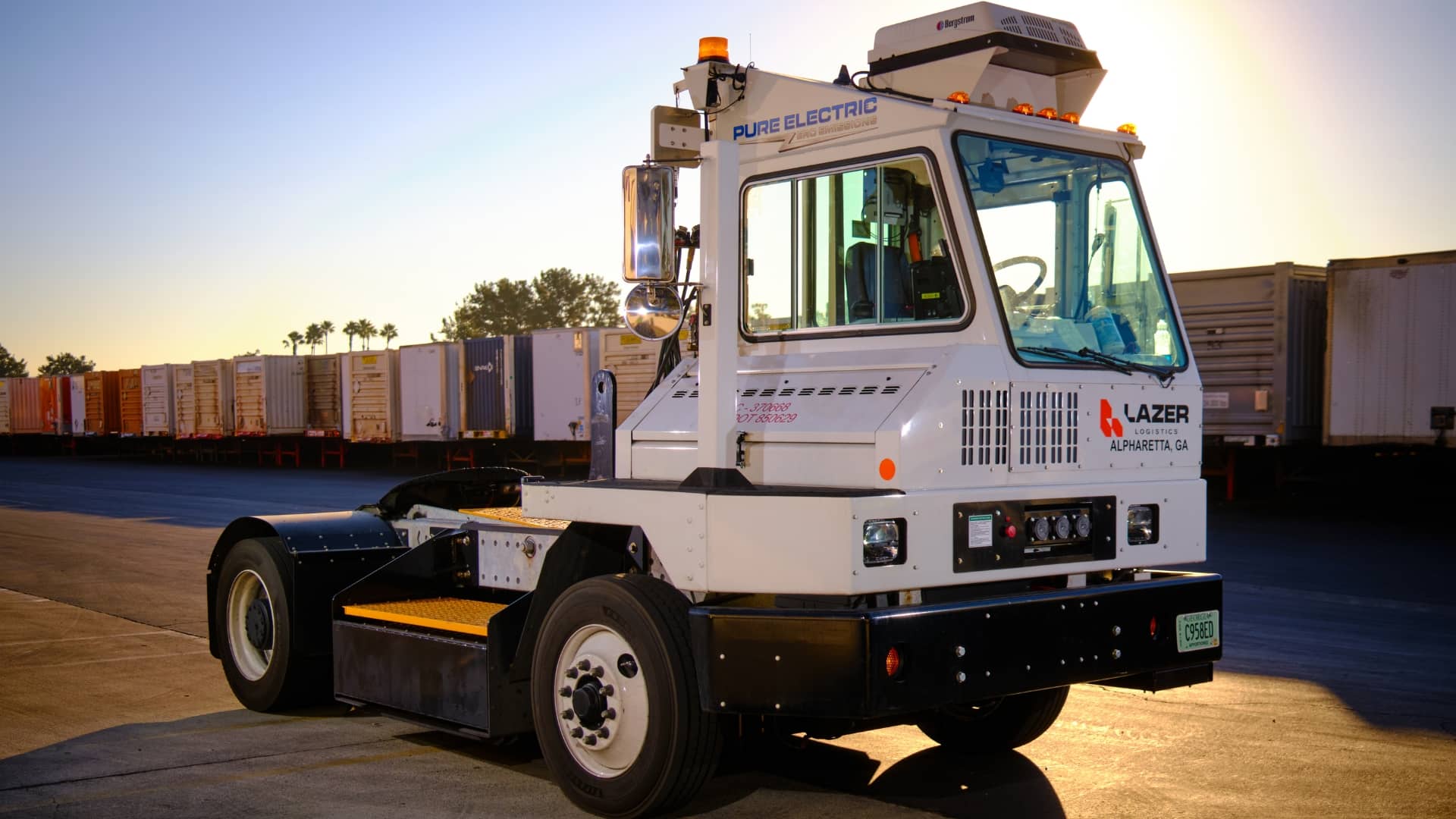Sustainability Goals? EVs Transform Distribution Yards

Sustainability goals have become a cornerstone in today’s rapidly evolving supply chain yard management. Distribution centers are pivotal as industries strive to reduce their carbon footprint and embrace eco-friendly practices. They have the power to lead the charge toward a greener future. Employing electric vehicles (EVs) is one significant avenue through which distribution yards can bolster sustainability efforts, making EVs integral to the sustainability movement.
The imperative for sustainability in distribution yards is clear. Traditional yard management systems often rely on diesel-powered vehicles, contributing to air pollution, greenhouse gas emissions, and noise pollution. In contrast, EVs offer a clean and efficient alternative, aligning with environmental regulations and consumer expectations for eco-conscious practices.
EVs in Yard Management
Reduced Emissions – EVs produce zero tailpipe emissions, significantly reducing the carbon footprint of yard management ops. By transitioning from fossil fuel-powered vehicles to electric ones, distribution centers can mitigate their environmental impact and contribute to local air quality improvements.
Lower Operating Costs – The long-term operational savings are significant. Electric vehicles have lower fuel and maintenance costs than their diesel counterparts. With fewer moving parts and simplified maintenance requirements, EVs offer a compelling economic case for distribution yards looking to optimize expenditures. This potential for cost savings should pique the interest of distribution center managers, motivating them to consider the switch to EVs.
Enhanced Efficiency – EVs boast rapid acceleration and quiet operation, facilitating smoother and more efficient yard management processes. Their instant torque delivery and regenerative braking capabilities make them well-suited for maneuvering within distribution yards, improving productivity and safety, and reducing idle times.
Flexible Charging Infrastructure – The integration of EVs necessitates establishing a robust charging infrastructure within yard management. Distributing centers can optimize energy consumption and minimize grid reliance by deploying intelligent charging solutions. Moreover, the strategic placement of charging stations enables seamless integration into existing yard workflows, ensuring uninterrupted operations.
Overcoming Challenges
Despite their myriad benefits, adopting EVs in supply chain yard management is challenging. Distribution centers must address concerns about range limitations, charging infrastructure availability, and initial capital investment. However, proactive planning, stakeholder engagement, and technological advancements can help mitigate these barriers and pave the way for a smooth transition to electric yard management.
Case Study
A retail giant was at the forefront of a sustainability revolution in Southern California’s Inland Empire. The region, dominated by warehouses and intersecting industries, presented challenges and opportunities for reducing carbon footprints and improving operational efficiency.
Implementing the Warehouse Actions and Investments to Reduce Emissions (WAIRE) Program, which aims to reduce nitrogen oxide and diesel emissions associated with warehouses, posed a significant challenge. The complex regulations, the need for substantial infrastructure upgrades, and the potential for carbon emissions fees were among the difficulties the company had to navigate.
Lazer Logistics leveraged its logistics expertise and fleet of spotters and shuttle trucks to collaborate closely with its customer. Lazer identified areas where electric vehicles (EVs) could be most effectively deployed through a detailed analysis of the company’s distribution centers.
The results of the company’s EV program were both environmentally beneficial and financially rewarding, surpassing expectations. The program reduced the company’s CO2 footprint and improved employee satisfaction and driver retention. Implementing EVs resulted in significant fuel and maintenance savings and helped avoid fines associated with the WAIRE Act, proving that sustainability can go hand in hand with profitability.
Consciousness and Responsibility
In an era defined by environmental consciousness and corporate responsibility, distribution centers play a pivotal role in driving sustainable goals and change. By embracing electric vehicles in yard management, you can significantly reduce your carbon footprint, enhance operational efficiency, and align with evolving consumer preferences for eco-friendly practices.
This contributes to a greener future and improves public perception and customer loyalty, as consumers increasingly favor businesses committed to sustainability. As distribution centers embark on this transformative journey, the integration of EVs promises to optimize logistics operations and contribute to a greener, more sustainable future.
CONTACT US
